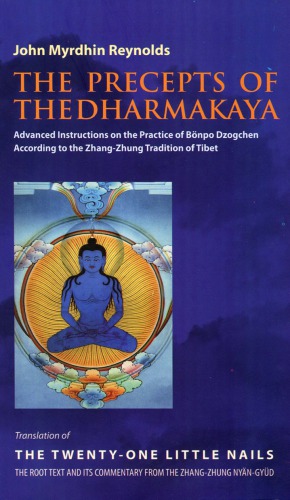Product desciption
The Precepts Of The Dharmakaya Translation Of The Twentyone Little Nails The Root Text And Its Commentary From The Zhangzhung Nyngyd John Myrdhin Reynolds by John Myrdhin Reynolds instant download after payment.
The teachings of Bön are organized into nine ways, or nine vehicles to enlightenment, the ninth and highest of which is known as Dzogchen, “the Great Perfection.” Among the four principal traditions of Bönpo Dzogchen, the oral tradition from the country of Zhang-zhung is of unique importance because it never became a Terma, or hidden treasure text rediscovered long after its original composition. The precepts of Dzogchen were said to have originated with the Primordial Buddha, Kuntu Zangpo, passing down at first through the Direct Mind-to-Mind Transmission and then later through the Oral Transmission of the Twenty-Four Masters, all of whom attained the Rainbow Body of Light. In Zhang-zhung in the 7th century, these precepts were communicated by the last in this line of masters to his disciple Tapihritsa, who subsequently attained Buddha enlightenment through the practice of vision, or Thodgal. In the next century, he appeared on a number of occasions at the Darok Lake in Zhang-zhung, or Northwestern Tibet, to the Tantric master Gyerpung Nangzher Lödpo, who set down these precepts in writing for the first time in the Zhang-zhung language. In the next century, they were translated into Tibetan and thus these precepts have come down to our own day in an unbroken line of transmission.
The teachings of the Zhang-zhung Nyän-gyüd, “the Oral Tradition from Zhang-zhung,” are classified into four cycles of texts, which are designated outer, inner, secret, and exceedingly secret. Accordingly, these precepts are said to represent the actual words of the enlightened master Tapihritsa. The outer cycle focuses on the general view of Dzogchen, the inner cycle on the practice of contemplation, or Trekchöd, the secret cycle on the practice of vision, or Thödgal, and the very secret cycle on the removing of doubts with regard to the Natural State of the Nature of Mind being the source of all visions, both in meditation practice and in normal life. In this last class, there is found the text known as “The Twenty-One Little Nails,” these representing twenty-one essential points of Dzogchen practice. Included here in this volume is the translation of the root text, and also that of the commentary attributed to Gyerpung. This represents one of the most important texts coming from early times for the understanding of Dzogchen Upadesha practice.


